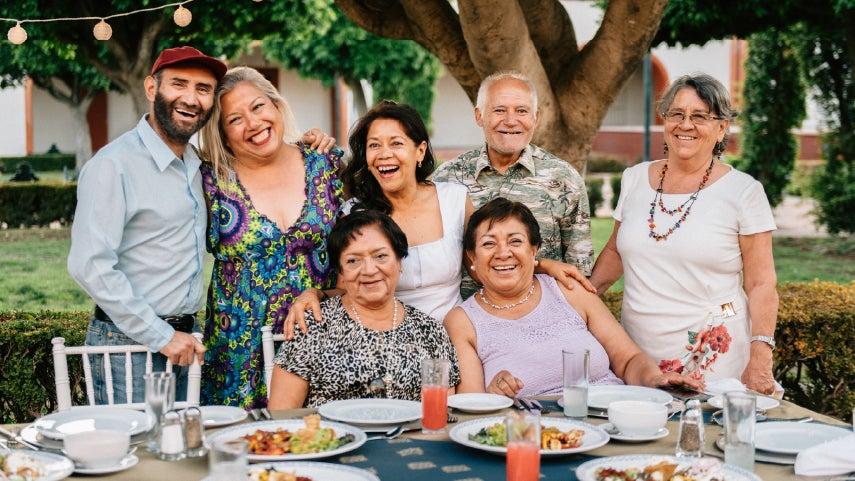Embedding Students into your CDSME and Falls Leader Networks: Tips for Success
3 min read

Related Topics
Leaders are a critical component to run evidence-based programs (EBPs); however, leader recruitment and retention is a frequent challenge experienced by many evidence-based program implementation sites. One unique model that some grantees are utilizing is embedding students into their leader network. This is a wonderful opportunity for students to get hands-on learning through community-based enrichment opportunities while also giving back to their community and improving utilization and capacity of programs.
Lessons from the field: Seven strategies for embedding students in your network
The following seven strategies can be used to engage with institutions of higher education to establish opportunities to include students in the implementation of evidence-based programs.
Identify hands-on activities students can participate in. Some examples include recruiting participants for evidence-based programs (i.e. leading health fairs at community centers), collecting data in the form of pre- or post-surveys and assessments, or getting trained in an evidence-based program to coach and lead workshops.
Align the work with a course or major where possible. Examples of relevant courses may fall within the majors listed below (note: examples do not represent an exhaustive list -- work with local institutions to seek alignment with your program goals and student engagement opportunities):
- Health Sciences or Health Administration
- Medicine
- Nursing
- Occupational Therapy
- Physical Therapy
- Social Work
- Education
- Public Health and Health Promotion
- Gerontology
- Psychology/ Counseling
- Dietetics or Nutrition
- Kinesiology
- Recreation Management
Find a champion within the college/university. Connect with professors who are committed to community engagement and advancing and diversifying the educational experiences of students. Key leaders, such as program directors or department deans, may also share the value of the partnership as a learning opportunity. No matter who you decide to engage with, set clear expectations for the role of the department, supporting professor, and students involved in the programs.
Incentivize students to participate. Work with the institution to offer academic credits and, when possible, funding or scholarships to students who participate. Following students' participation, provide strong letters of support or recommendation for students who apply for scholarships, awards, and postgraduate academic programs. You can also work with the institution to structure the program as a work-study position, or offer opportunities for research engagement, publication, or career shadowing (beyond EBP workshop facilitation).
Highlight professional development opportunities for students. Give students professional experience that can be added to their resumes and cover letters, including experience working in various health care settings based on their major and program. If applicable, offer community outreach opportunities to meet the students' degree requirements. Students can also be trained in EBPs and lead classes independently.
Provide supervision and support to students throughout the semester or academic year. Encourage students to pick a project for the semester with their supervisor that matches their current coursework or major, like a captsone project. Schedule regular check-ins with students to ensure they are meeting expectations and get any questions or concerns addressed. Be sure to work closely with academic staff to balance supervision of experiential learning along with academic progress.
Encourage student participation in opportunities on and off campus. Collaborate with peer educators on campus to promote opportunities for student participation in evidence-based programs. Together, you can plan opportunities for students to present their projects in class, at conferences, or at other events.Collecting student feedback can be invaluable in strengthening working relationships between students and staff.
Embedding students in evidence-based programs provides academic and professional opportunities for future health professionals. These strategies have been provided by our current CDSME and falls prevention grantees.
Highlighting CDSME & Falls Prevention Grantees
Institutions of higher education play a pivotal role in providing students with experiences to shape their academic and professional careers. By embedding students into your evidence-based programs, you increase your access to leaders and program implementation support.
For more information about the CDSME and falls prevention grantees currently embedding students into their programs, please see below:
- The University of Texas in Galveston (CDSME, 2023) works with medical students, nursing students, and public health students in the School of Public and Population Health to lead classes, assist with recruitment and outreach, and complete participant biometric measurements.
- Rush University Medical Center (CDSME, 2022; Falls Prevention, 2023) works with trained RN and OT students in evidence-based programs for their projects like capstones or clinical rotations.
- The University of Louisville Trager Institute (CDSME, 2024) provides practicum students and interns with a tailored experience to focus on their academic and professional goals throughout the students’ academic program.
- The County of Middlesex (Falls Prevention, 2023) partnered with medical students from Rutgers Robert Wood Johnson Medical School (RWJMS) Homeless & Indigent Population Health Outreach Project (HIPHOP), Office of Community Health, and interns from Rutgers School of Public Health to conduct Check for Safety Home Safety assessments.
- Rhode Island Department of Health (Falls Prevention, 2024) has required that students in their PTA, PT, OTA, and OT programs complete leader training in an evidence-based program as part of their curriculum and graduate requirements.



